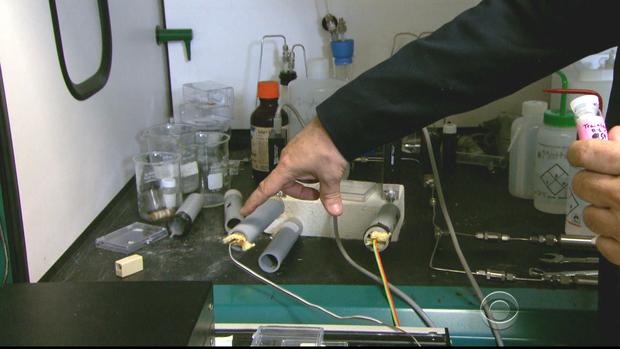New device could detect explosive favored by terrorists
In the raid on the Brussels suspects' apartment, police found a homemade explosive called TATP.
Terrorists like it because it's made with household chemicals, like nail polish remover, ingredients that don't raise suspicion when they're purchased. Now, American researchers have a new device to detect it.
Dr. Jimmie Oxley is the director of the University of Rhode Island's Center of Explosives Detection. The university has been given a $1 million grant by the Department of Homeland Security to come up with a sensor for the highly volatile explosive, TATP.
"You don't need pounds to cause a catastrophic failure," Dr. Oxley explained.
It only took a tenth of a pound of TATP to rip apart a car door. Tuesday night, Belgian police seized 33 pounds of the explosive -- that's 300 times more .
TATP is made with hydrogen peroxide and acetone, items easily purchased at a drug store. For years we have relied on bomb sniffing dogs to detect TATP, but with long hours and fatigue, they have their limits.
From a campus lab, professor Otto Gregory designed the sensor that detects TATP.
"It's an electronic trace detection system that can do and compete with a dog, and doesn't need a break. It detects 24/7."
Gregory says that in closed spaces like airports, the sensor can detect amounts as small as 1 part per billion. He held a vial which contained trace amounts of TATP, and within seconds the computer graph spiked, alerting to the presence of the explosive.
"We would like to get it out there yesterday," Gregory said of finishing testing on the device.
The device will enter real-world testing later this year. The goal to get it down to the size of a smartphone so if could be put on things like a turnstile, or worn by an officer.

